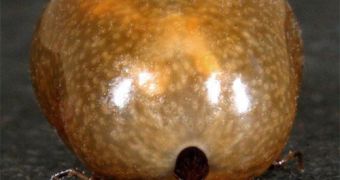AIDS sounds familiar to you, while Lyme may not, but after AIDS, it is the disease with the most rapid development, spreading rapidly in US, Asia, Europe and South America. A new research published online this week in the Proceedings of the Royal Society B shows that mice may not be the main source of Lyme disease in US. Two shrew species and chipmunks, too, seem to be involved and should be taken into account for controlling Lyme disease.
Lyme starts with skin migrant erythema (ME) leading to whole back eruptions, fever, head aches, neck stiffness, muscular pains, facial paralysis, meningitis and exhaustion. Sometimes, there can appear eye inflammations, dizziness, and panting. If untreated, in over half of the cases, victims experience joint swells and excruciating pains, that can last for months. About 20 % of the untreated patients can get chronic arthritis. Sometimes the disease attacks the nervous system and can cause heart conditions. The long-term patients can experience also memory loss, focusing impairments, and changes in the sleep pattern.
Pregnant women should be extremely careful, as the infection can be transmitted to the fetus, increasing the risk of a spontaneous abort or a still child birth.
The cause is Borrelia burgdorferi, a spirochete bacterium transmitted to humans from other hosts by blacklegged ticks. It has been assumed that most ticks get infected as larvae, with their first blood meal on white-footed mice. 90% of ticks sucking blood from infected mice got the bacteria.
But even other species that transmit the Lyme bacterium less efficiently could play an important role if the effectives are large, and the tick population's booming. A 2004 research showed that even when mice on the field were vaccinated, this did not decrease significantly the number of infected ticks.
Now the team led by disease ecologist Dustin Brisson of the University of Pennsylvania looked at an external surface protein of B. burgdorferi collected from the ticks, which acts like a fingerprint, offering clues about the vertebrate host.
This way the team could assess various host species transmitting the microbe to ticks and tick densities on a host. White-footed mice made just 25 % of the total number of infected ticks, short-tailed shrews and masked shrews another 25 %, and chipmunks 13%. "That means that mice aren't the "dominant" host at all and vaccination strategies aimed at mice alone are unlikely to bring Lyme disease under control.", said Brisson.
Some researchers warn that there are even more host species. "In particular, the team barely looked at birds, even though one study has shown that robins, which often live close to humans, are very good at transmitting B. burgdorferi to ticks in the lab.", said Durland Fish of Yale University School of Medicine, co-author of the 2004 vaccination research.

 14 DAY TRIAL //
14 DAY TRIAL //